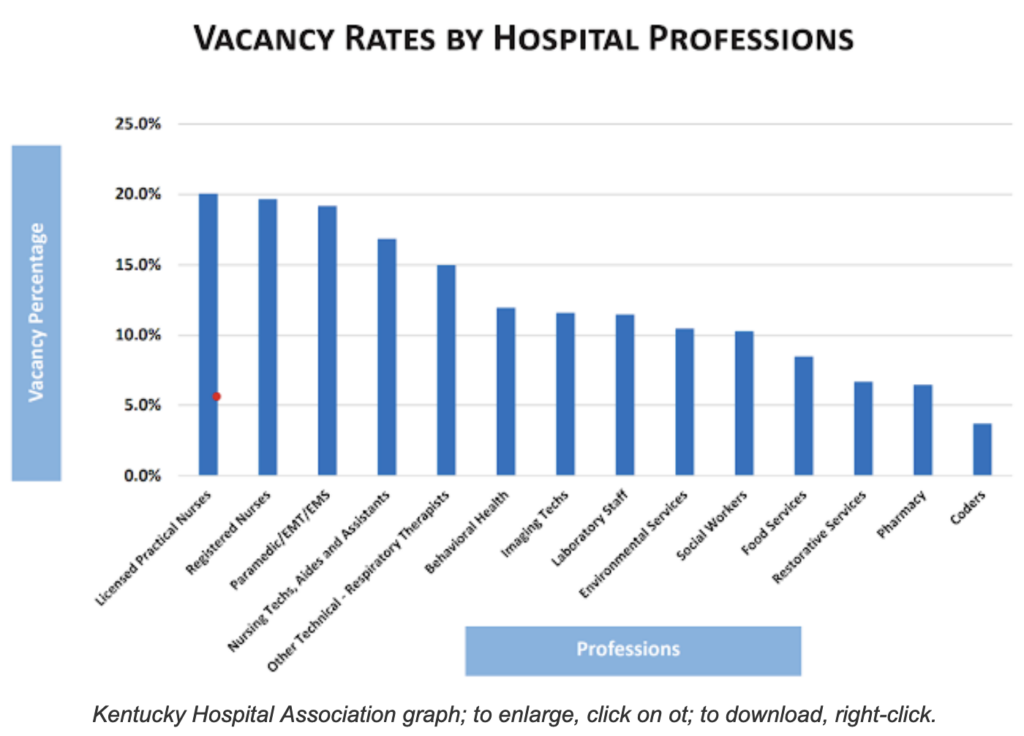Kentucky Hospital Association says its annual survey shows state continues to have an ‘acute shortage’ of health care workers

By Melissa Patrick
Kentucky Health News
The Kentucky Hospital Association‘s annual Workforce Survey Report says Kentucky suffers from an “acute shortage” of health care workers, with nearly 13,000 job vacancies in hospitals across the state at the end of 2022.
“While the shortage of health-care workers is nationwide, it has hit the commonwealth especially hard, and KHA is working with multiple partners to find ways to address the challenges,” KHA President and Chief Executive Officer Nancy Galvagni said in a news release.
The KHA Workforce Survey Report provides an in-depth look at the non-physician hospital workforce in Kentucky. It found that Kentucky had a 15% vacancy rate among that workforce in 2022.
 For the first time, hospital-employed paramedics, EMTs and other EMS personnel are included in the report. They had the highest vacancy rate among non-nursing occupations (19.2%), followed by respiratory therapists (15%) and behavioral-health professionals (12%).
For the first time, hospital-employed paramedics, EMTs and other EMS personnel are included in the report. They had the highest vacancy rate among non-nursing occupations (19.2%), followed by respiratory therapists (15%) and behavioral-health professionals (12%).
The survey shows that the shortage of registered nurses is the most pronounced, with four AD districts having registered-nurse vacancies above 20 percent – Barren River (21.2%), Lincoln Trail (22.3%), Buffalo Trace (22.4%), and Bluegrass (23.7%). Vacancies employee vacancies above 20 percent, Kentucky River (23.7 percent).
“Our primary objectives are to expand Kentucky’s health care workforce pipeline, remove barriers to health care education, retain the current health care workforce, and redesign models of care,” Russell F. Cox, president and chief executive officer of Norton Healthcare and chair of the KHA Workforce Committee, said in the release. “Through extensive public and private sector collaboration, we are poised to help more Kentuckians attain rewarding, long-term careers in health care while improving the health of our communities.”